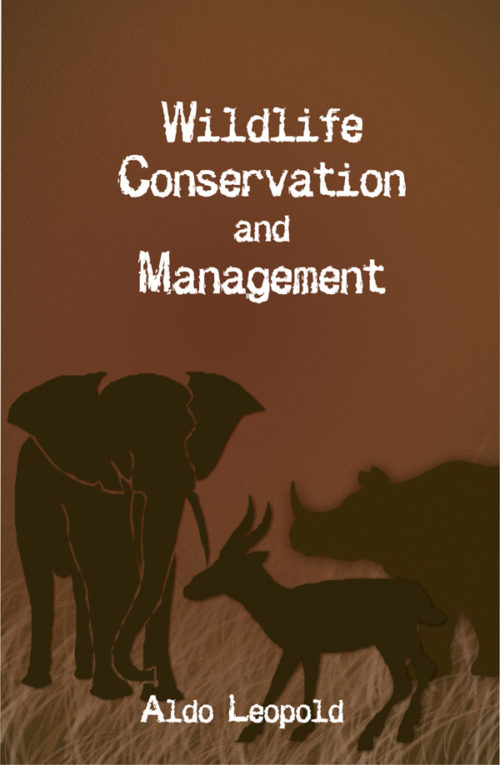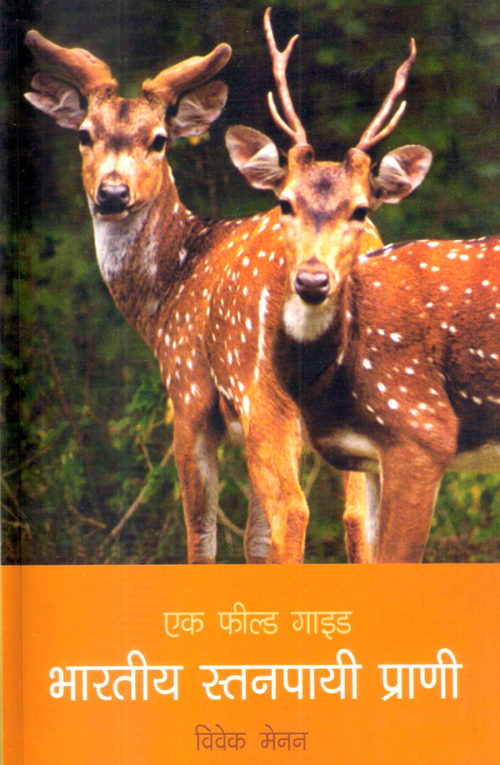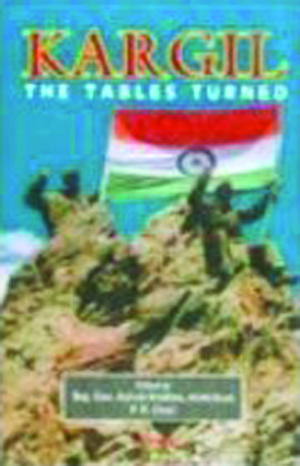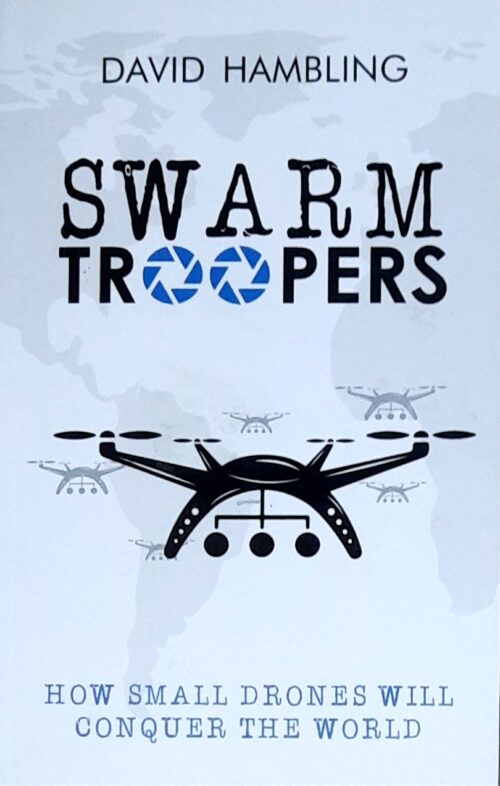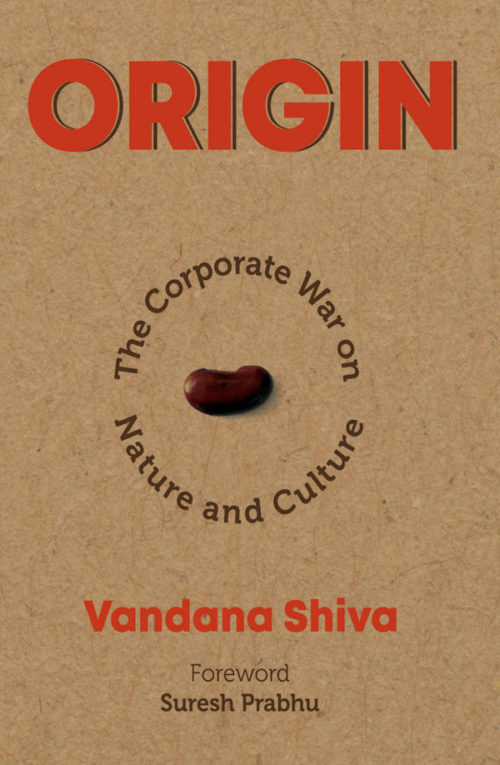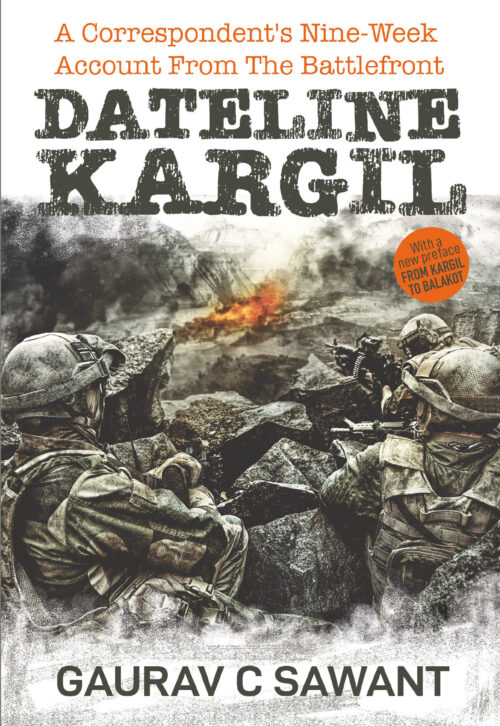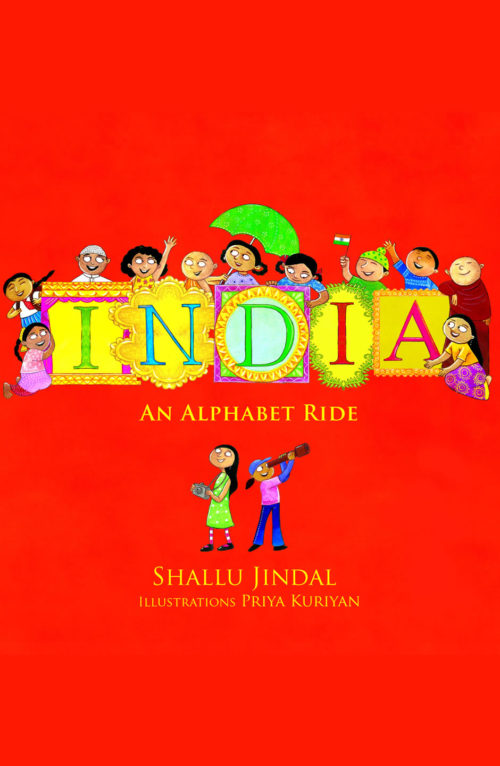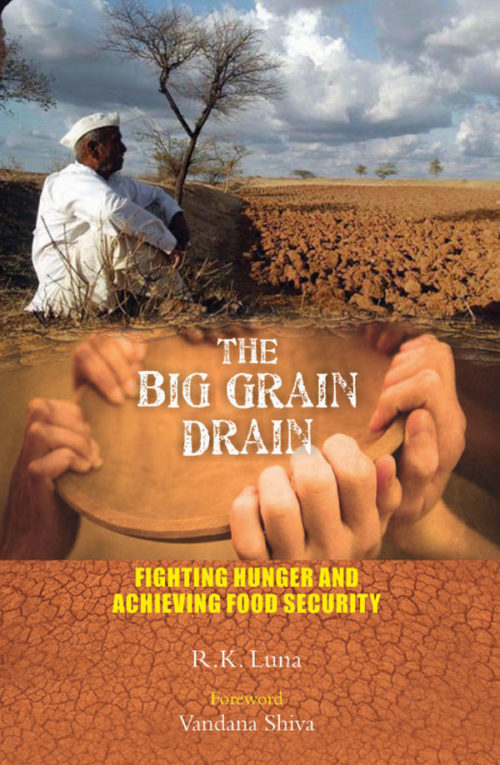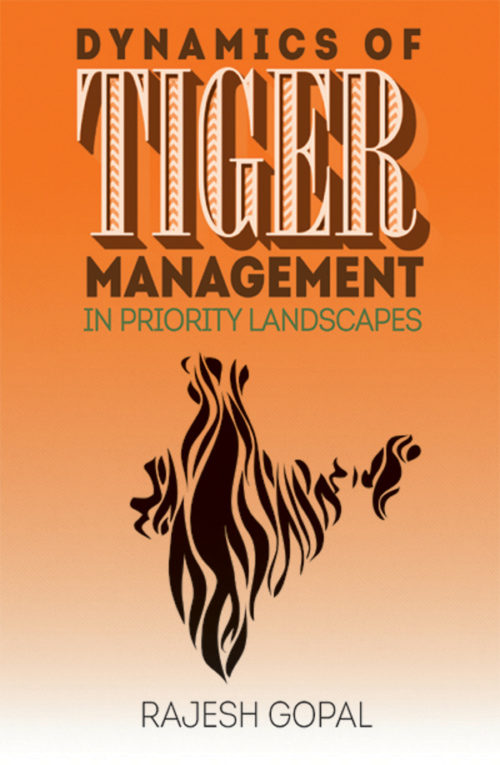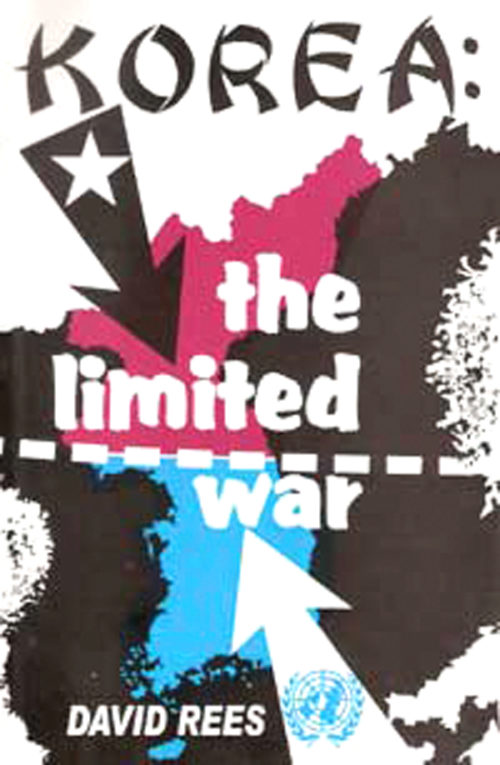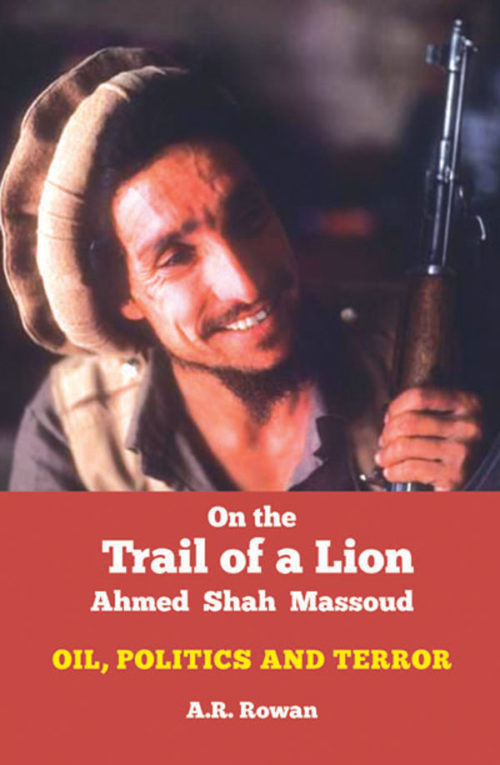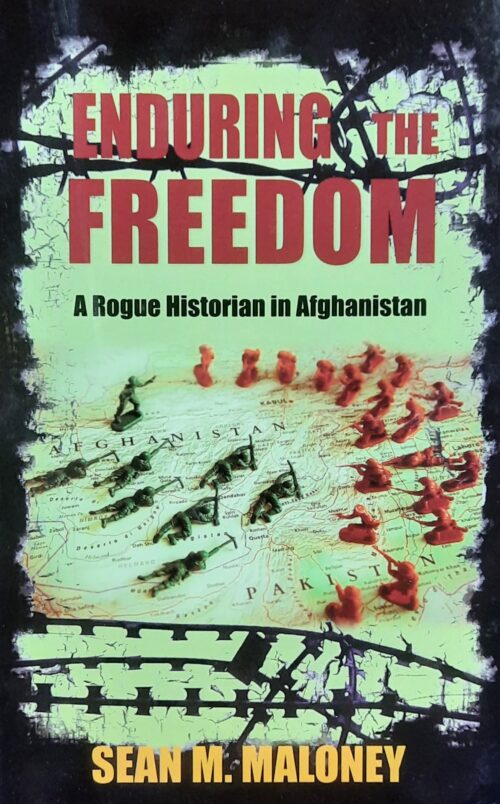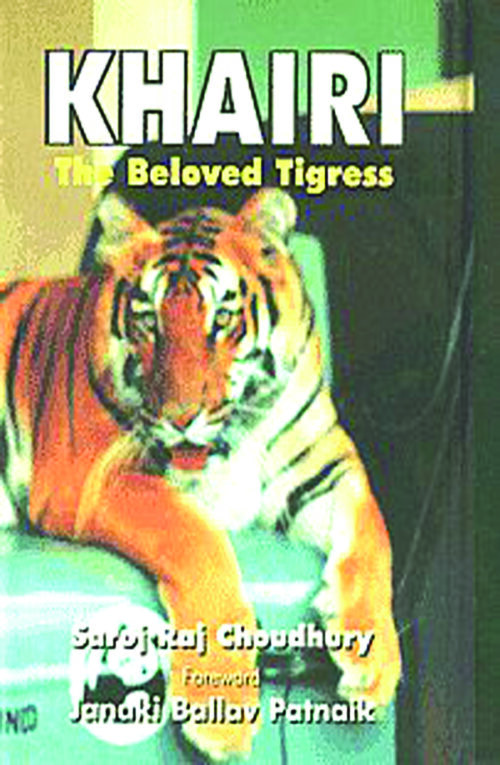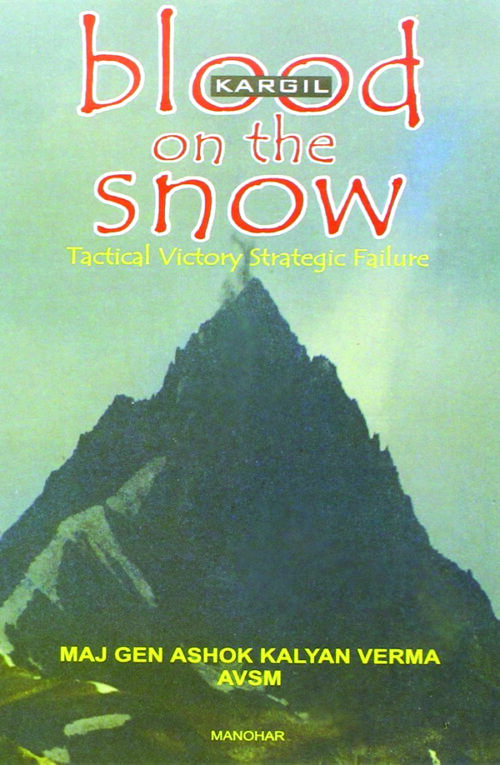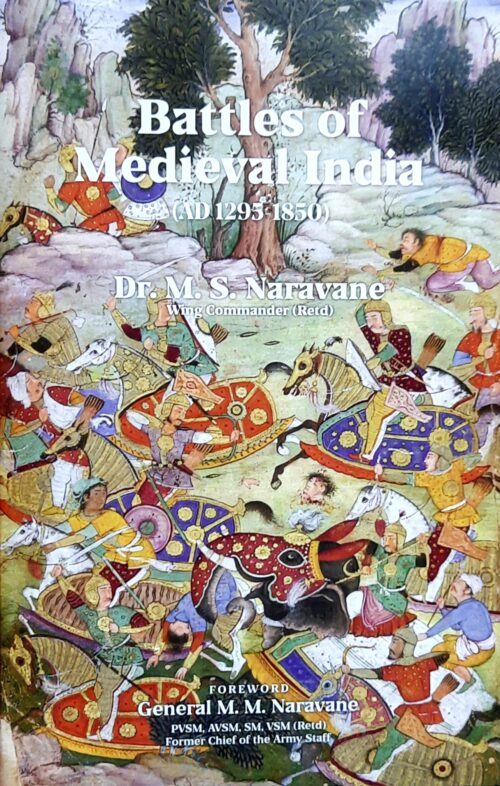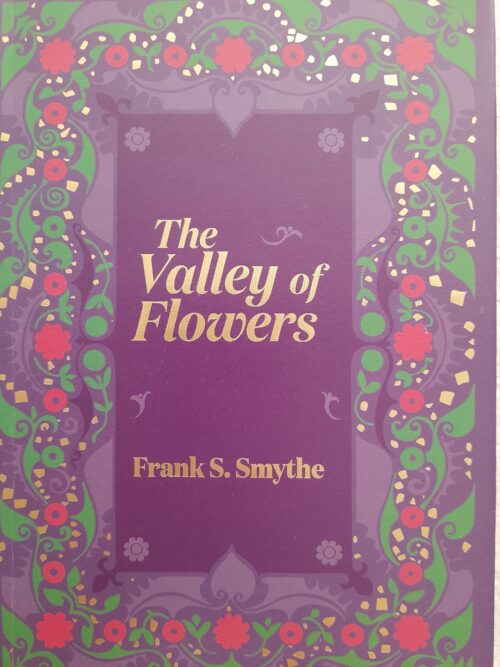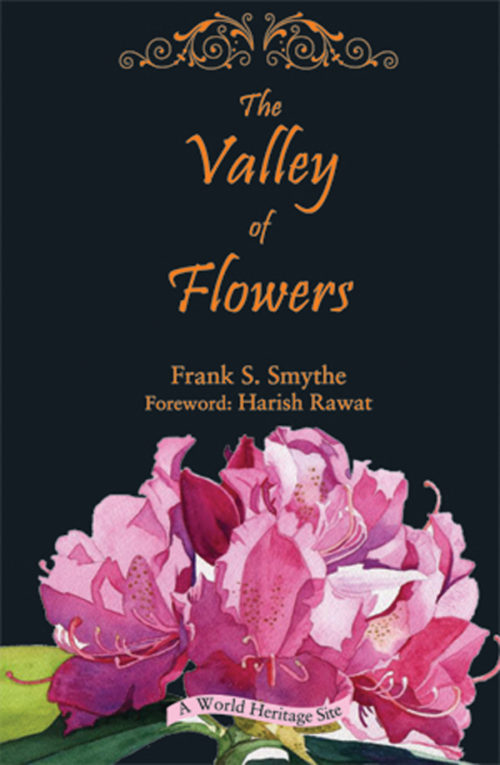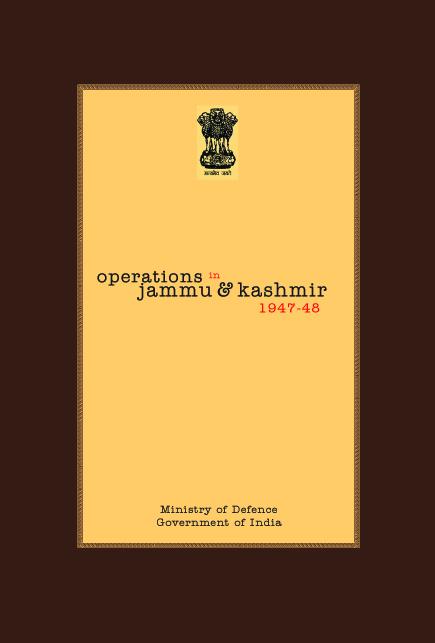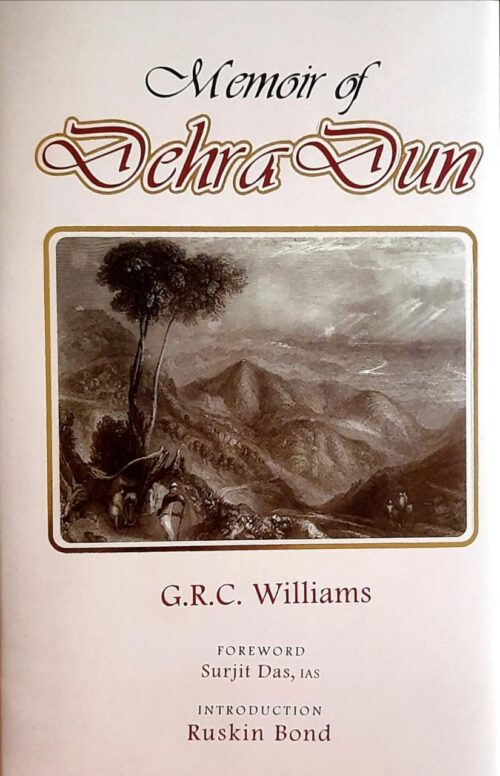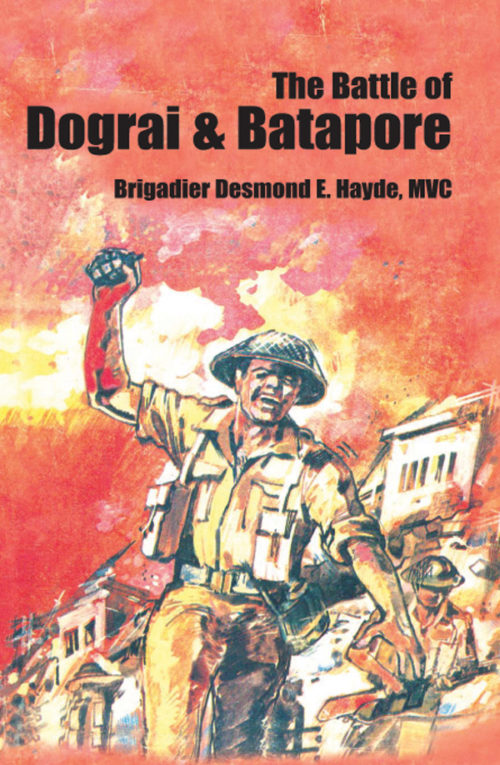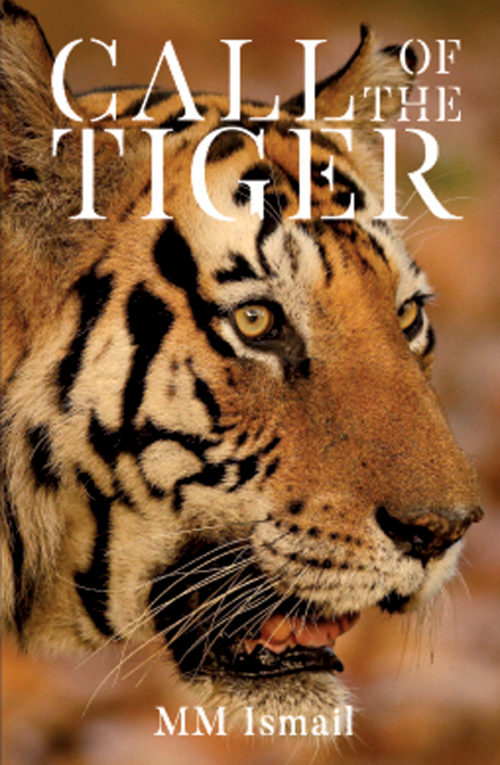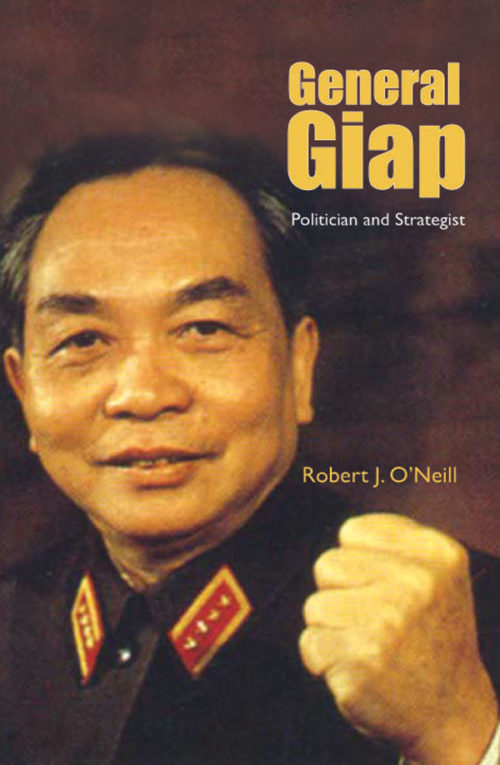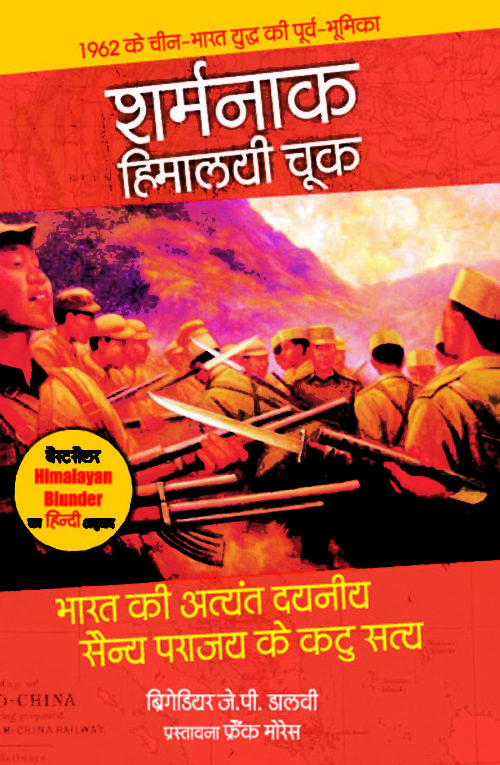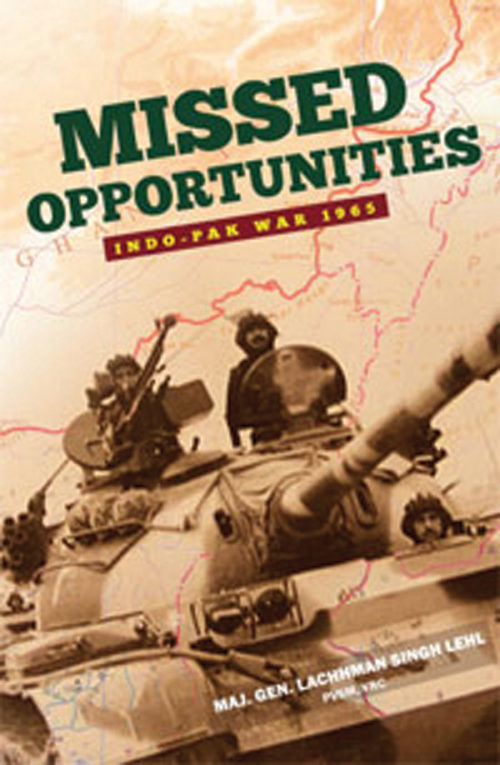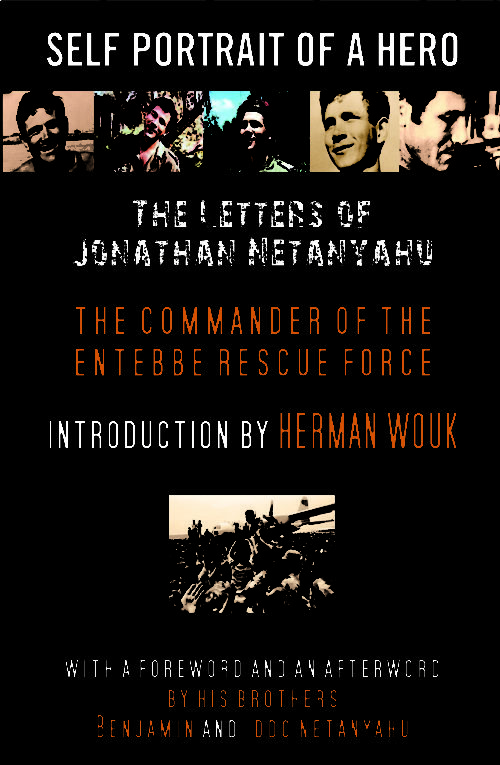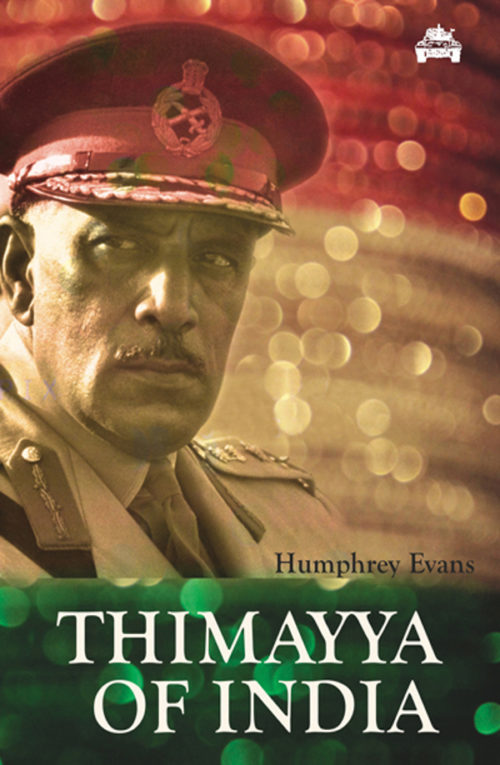-
-
Written in a light and humorous style, this is the exclusive and official biography of FM Sam Manekshaw, in its revised and updated form. -
This is the much-awaited Hindi edition of the popular "Field Guide to Indian Mammals" by Vivek Menon
-
Bhitarkanika is one of India's most exciting biodiversity regions. This book focuses on it as a case study to understand protection and conservation efforts.
-
Kargil: The Tables Turned provides a comprehensive review of past motivations and events; it covers the operational aspects of the 1999 war in their entirety and highlights the heroism, amd sacrofoce of the young officers and soldiers of the Indian Armed Forces.It brings out useful military lessons and perspectives. The book analyses India's political and diplomatic responses, and the role of the USA, China and G-8 concluding chapter speculates on the future of Indo-pak relations and highlights some unique aspects of this South Asian conflict.
-
Advances in technology have set the stage for a major shift in how we fight wars and gather intelligence. Drones - cheap and plentiful - are poised to support and, in some cases, supplant current weapons, at a fraction of the cost. Not everyone is convinced. How can small drones with limited battery life stay in the air long enough to achieve anything on a strategic scale? And how can anything so small make an impact? But with new tchnology that allows drones to draw energy from the environment and swarms of thousands of drones acting together, their impact is anything but small. From anti-personnnel weapons to miniature demolition devices and high-temperature incendiaries, new technology is making small drones into true engines of destruction. The high cost of miliary aircraft, the rise of biomimetic technology, advances in the science of swarming behaviour - all of these are leading us to a future where drone swarm rules the skies. "Swarm Troopers" will show you what that future looks like and explore whether or not we''ll be ready for both the opportunities and threats it may bring.
-
This book lays out the scientific , legal, political and cultural struggle to defend the sovereignty of biodiversity and indigenous knowledge. Corporate war on nature and people through patents and corporate Intellectual Property Rights (IPR) has unleashed an epidemic of biopiracy, including important legal battles of fighting biopiracy including neem, wheat and basmati which are synthesised in this book. It is the first detailed legal history of the international and national laws related to biodiverity and IPR. The attempt to 'enclose the commons of biodiversity and biodiversity related knowledge through patents and intellectual property rights ( IPRs) is the final step in the series of enclosures that began with the rise of colonialism. The recovery of the commons through the reocgnition of common creativity of nature and people, paves the way for a future beyond piracy and monopoly, it wakes us to the origins of life in nature and knowledge in culture. It sows the seeds of shared abundance.
-
The book gives a gripping, first-hand account of the author’s nine-week long stay in Kargil (during the encounter) and his experiences. He succinctly details the operation with special emphasis on the human side of the conflict. The graphic depiction of the war and candid interviews with the top brass makes for a true-to-life experience for the reader.
-
"A Wonderful Concept." - RUSKIN BOND LEARNING ABOUT INDIA WAS NEVER SO MUCH FUN! They say a picture is worth a thousand words. We agree. We say that a single alphabet is worth a hundred words. You will agree. "INDIA:An Alphabet Ride" uses illustrations and A, B, C to tell you everything you neded to know about the country without the boredom of formal textbooks. Get ready for a thrilling ride through India's states and cities, visit its heritage sites, learn about its customs, tast the diverse food and dance to its many festivals and sounds. -
Protected areas are sacred lands capable of providing us a kinship with wondrous wild creatures and plants, our fellow travellers on this planet. We need to ensure their persistence for posterity. Scientific wildlife mangement plans form the foundation of a protected area but they need vision and long term planning. This book provides the essential framework, processes and procedures. It is based on integration of modern scientific precepts and practises with social, cultural, economic and administrative realities. It is designed to address multiple spatial scales and links with plans for forest management and those for social and economic development on the surrounding managed landscapes.
-
"Mangroves are specialised trees that grow in the interface between ocean and the land. They form the skin along the coastline that protects the coastal areas from erosion, hurricanes, cyclones and many other natural calamities that arise from the sea. Globally, mangroves comprise only 80 different species that grow in saline habitats. Apart from protecting coast line, from erosion, hurricanes, cyclones mangroves offer enormous tangible and intangible services to human kind by providing livelihoods in the form of fishing and tourism for local communities, sequestration of carbon in mangrove sediments, balancing the food chain etc. Despite of all these they face challenges for survival due to various threats that arise due to increasing urbanisation. Among the current threats to mangrove ecosystems are cyclones, storms and floods as natural threats and anthropological interference such as encroachments for dwelling, aquaculture and other livelihood purposes. Mangroves exhibit a variety of adaptations viz. morphology, anatomy, physiology, seed and seedlings development and succession mechanisms. Maharashtra comprises about seventeen species of true mangroves and few associates, widely distributed throughout the coastal districts. Mangroves in Maharashtra are protected under forest laws, despite this sometimes they are destroyed and illegally transported to various locations. At present, many publications are available on the ecology, morphology and taxonomy of mangroves, but the information on wood anatomy is very scarce. Thus a need was felt to generate the data which will help the decision makers in analysing the illegally cut wood source. This will also be crucial in conservation of mangroves. Therefore, a research project was undertaken by Institute of Wood Science and Technology (IWST), Bangalore to study the wood anatomy of seventeen mangrove species grown along the coastline of Maharashtra. The data so obtained from the study is compiled along with morphological features of each species and is being published in the form of this book and will be highly beneficial tool in understanding and identifying the source of wood that belongs to mangrove species. The present contribution will help to identify a mangrove species both in the field and laboratory based on morphology and wood anatomy. "
-
The books takes a critical look at the impact of the Green Revolution on Indian farming. It offers solutions, in terms of organic farming and biodiversity conservation. This is a book every one must read, specially policy makers and scientists, so they learn from the reality of the real costs of the Green Revolution, stop the expansion of the Green Revolution into East India, and start te transition to the Real Green Revolution that works with nature, not against her, which works for people, not against them.
-
This gripping book is the official US account of the successful First Gulf War.
-
This book brings together all the poems written by the poet laureate of the common man: Rudyard Kipling. A must have for Kipling lovers.
-
"Tigers have an inherent habit to move across landscapes. To facilitate such movements, corridors are essential. Lack of corridors connecting landscapes result in fatal human-tiger conflict, where, in most cases, it is the tiger which suffer. It has been proven that tiger population is determined by the carrying capacity of the tiger reserve. These is a great need for the connectivity of smaller population with larger population of tigers for their persistence in the future. The persistence of small population with habitat corridors in a metapopulation framework is the best management option for conservation of tigers in the long term. The population dynamic of tigers thus depends on the quality of good and poor habitats, known as the source and sink dynamics. This book emphasises on the need to evaluate and develop a mitigation strategy for maintaining metapopulation structures of tigers in the priority landscapes. The green infrastructure concept factors the importance of natural environment in land use planning. In the context of tiger landscapes in India, this will encompass a large number of tiger reserves, protected areas, corridors which create a system of 'hubs' and 'links'. The green development in a tiger landscape spreading across multiple jurisdictions. "
-
This book scrupulously chronicles the German defeat at the hands of the Russians.
-
This book provides an indepth account of the war that divided the Korean Peninsula and left an ever-lasting scar.
-
On the Trail of a Lion is a unique, first-hand and often chilling account of the turmoil in Afghanistan over the past 20 years, an exposé of the heroes and the villains of the history and a most human story of one man, Ahmed Shah Massoud, and his vision for his country. The book concludes with an analysis of Afghanistan in the turbulent post-Massoud era.
-
It describes the revolt in Arabia against the rurks, as it appeared to an Englishman who took part. Round this tentpole of a military chronicle, T.E. lawrence has hung an unexampled fabric of portraits descriptions, philosophies, emotions, adventures, dreams. He has brought to his task a fastidious scholarship, an impeccable memory, a style nicely woven of oxfordisms and Doughty, an eye unparalleled...a profound distrust of himself, a still profounder faith
-
A vivid yet insightful view of what the Global War on Terror really means in Afghanistan's unforgiving mountains and churning cities. Sean Maloney's combination of on-the-ground experience in Afghanistan and his background as an experienced military historian and analyst brings real insight to the fascinating and strategically vital situation. It has been a new world since 9/11, and Sean Maloney has expertly chronicled a part of it. This is the story written from the frontline, not the academic desk, by a Canadian with much experience of the emerging nature of conflict worldwide. -
The true story of a forest conservator who brought up a tigress, Khairi, just like his own daughter.
-
The continuum of tactical victory followed by strategic failur has been the baneful pattern of India's handing of vital security related issues since indepandence. Kargil: Blood of the Snow is a comprehensivemilitary analysis, focusing on this issue.
-
Travel back to lesser known, but vitally important chapters of India's war history dating from the 13th century to the 19th century in this expansive book. The author, an armed forces veteran and scholar, carefully selects befitting battles and explains their importance not just in India's history but also India's present. Filled with interesting diagrams and fascinating maps, this book provides great lessons and insights for today's strategists and leaders, whether in the military or outside. It is also a historian's delight as it revisits an unexamined past with great flair and high quality analysis.
-
Nature writing at its best! This book is the perfect addition to every mountain lover's bookshelf. In 1931, a party of British mountaineers—including Frank S. Smythe—on their way back from a successful ascent of Mount Kamet, were looking for shelter from inclement weather in the wilderness above Joshimath in present-day Uttarakhand. They chanced upon the lush and colourful Bhyundar Valley, the Valley of Flowers. In the monsoon of 1937, Smythe returned to the Valley with four Tibetans from Darjeeling. On this adventure, Smythe extensively explored the Valley, identifying and collecting flowers and seeds from among the wealth of plant life. He and his friends also scaled the Nilgiri Parbat and the Mana Peak and were defeated by Mount Rataban. Beset by the rains, the party was nearly always soggy and, once, an Abominable Snowman gave them the fright of their lives. Yet, these were but minor prices to pay for the privilege of witnessing the Himalaya in its infinite variety and for a great deal of time usefully spent ruminating on the joys of idleness. "For solitude in the Valley of Flowers taught me the insignificance and incapacity for happiness of thought as compared with a meditation that knows no intellectual limitations, but is content to accept with childlike faith and delight the infinite beauties and granduers of the universe."
-
On War has been a staple text for military generals who have led their armies in battlefield across centuries since its first publication in 1832. It is also an essential rule book to achieve success in any field and thus remains a classic.
-
This is an expose on China’s conspiracy to destroy America as it is in China’s interest to be the supreme super power, economically, militarily and geographically.
-
The most authentic account of the Valley of Flowers, this book also has maps and photographs.It is of immense interest to mounatineers, botanists, gardeners, naturalists, photographers, travellers, and the army chair traveller.
-
-
This is the full story of the military operations in Jammu and Kashmir during 1947-48, undertaken to save that Princely state, which had acceded to the Union of India, from a brutal invasion from Pakistan. The year long campaign saw many triumphs and tragedies, which are narrated objectively and in detail. The Indian Army and Air Force, just emerging from the throes of Partition, and still in the process of reorganisation, emerged from this ordeal with added brilliance and a brighter halo. It is an inspiring saga of heroism, devotion to duty, scarifice and professional competence. Based on careful and exhaustaive research in secret government records, the book analyses the operations and presents the story in simple, non-technical langauge. It should prove invaluable for the intelligensia, the journalist, the reading public as well as the man in uniform.
-
The Doon Valley, distinguished by its singular beauty and by the excllence of its many instuttions has won for itself a place of pre-eminence in the history of India. While its origins as a habitation are shrouded in the mists of time, it holds a place in folklore, legend and mythology. It appears firmly rooted in chronicled history only late in the sixteenth century. Thereafter myths give way to real historical figures and their combats with clash of steel and the bark of muskets as they strive for possession of this fertile valley. Replete with delightful anecdotes and lavish in its praise of the natural beauty of the valley, this book is a perfect addition to every Doon lover's bookshelf.
-
Liddell Hart set out to cover T E Lawrence and the Arab Revolt but as his research grew and his interaction with Lawrence increased, so did the scope of this remarkable biography. What emerged was a man of reflection, of action, liked by many and disliked by many - but as Liddell Hart writes, that is true for any outstanding figure of his time and Lawrence did stand tall, in all that he achieved and in the decisions he took. And what binds both categories of viewpoints on Lawrence is a common admiration for him. The book talks about his achievements, character, and qualities of leadership. It is a testimony to his transcendent powers. Since Liddell Hart is a military historian, the book is a parallel account of the psychology of a warrior, with timeless lessons for officers today.
-
-
This is a book that focusses on two most hard-fought battles in the Indo-Pak war of 1965. This is that kind of book that has the capacity to move all nation-loving Indians.
-
First published in 1964,'Call of the Tiger' by Lt. Col. M.M. Ismail comes at a time when the era of hunting has receded into history, leaving books like it to provide a glimpse of days past. Set in the 1950s, these gripping tales serve as reminder of what the forests of Central India were like when wildlife was more plentiful and widespread that it is today.
-
All the detailed customs and traditions in the Indian Army are put together in this book in simple and lucid language.
-
This book narrates the saga of the nail-biting 100-hour battle for Golan Heights between Israel and Syria.
-
The moral strength of the fighting soldier and the spirit to stand up in the face of the enemy despite the threat to one’s life – is what makes on a soldier. This book discusses the tenets of such willpower and how to fight fear.
-
This book is regarded as the Bible on the ecology of forests. It is sure to arrest the attention of not only students studying forestry but lay readers as well.
-
This book serves as a reference guide on forest engineering which is the foundation of the superstructure of the successful management of forests.
-
"General Giap, the mastermind of the French defeat at Din Bin Phu and War Minister for North Vietnam during the years of American involvement, was a unique leader and s strategiest of guerilla warfare. This book is based on source material relating to Giap's early participation in the Communist movement, his activities during The Second World War and his leadership of the armed force of the armed force of the Viet Minh against the French. The author assesses Giap not only ex post facto by what his plans actually achieved, but also by the quality of the decisions which he took as first step in achieving a military result. An attempt has been made to provide a comparison of facts from which value judgements may be made. "
-
This controversial book, written by Brigadier J P Dalvi, laid bare the caustic truth behind Indian crushing defeat in the hands of China in 1962.
-
A fascinating autobiography of the master tactician and the Soviet hero of World War II.
-
This book is one of the best books written on the 1965 war.It offers a comprehensive understanding of the roots of Indo-Pak conflict. Fcousing on the 1965 war, this book begins with discussing the game plan of the major world powers that affected the Indo-Pak War. It offiers a very useful and informative account of the lineage, growth, weaponry, ethos, and operational doctrines of the Armies and Air Forces of India and Pakistan. The easy style and quick pace of the book make it stand out among other books on the war.
-
Here is the story of a hero , the story of young Jonathan, the Commander of the Entebbe Rescue Force, who gave up his life in Operation Thunderbolt to rescue passengers of the plane hijacked by international terrorists.
-
This book, covering the European part of the Second World War, stands as one of the masterpieces of military history.
-
This book is an erudite and intimate illustration of the glorious career of General Thimayya by his close associate and comrade-in-arms.
-
Written in a light and humorous style, this is the exclusive and official biography of FM Sam Manekshaw, in its revised and updated form. -
The moral strength of the fighting soldier and the spirit to stand up in the face of the enemy despite the threat to one’s life – is what makes on a soldier. This book discusses the tenets of such willpower and how to fight fear.
